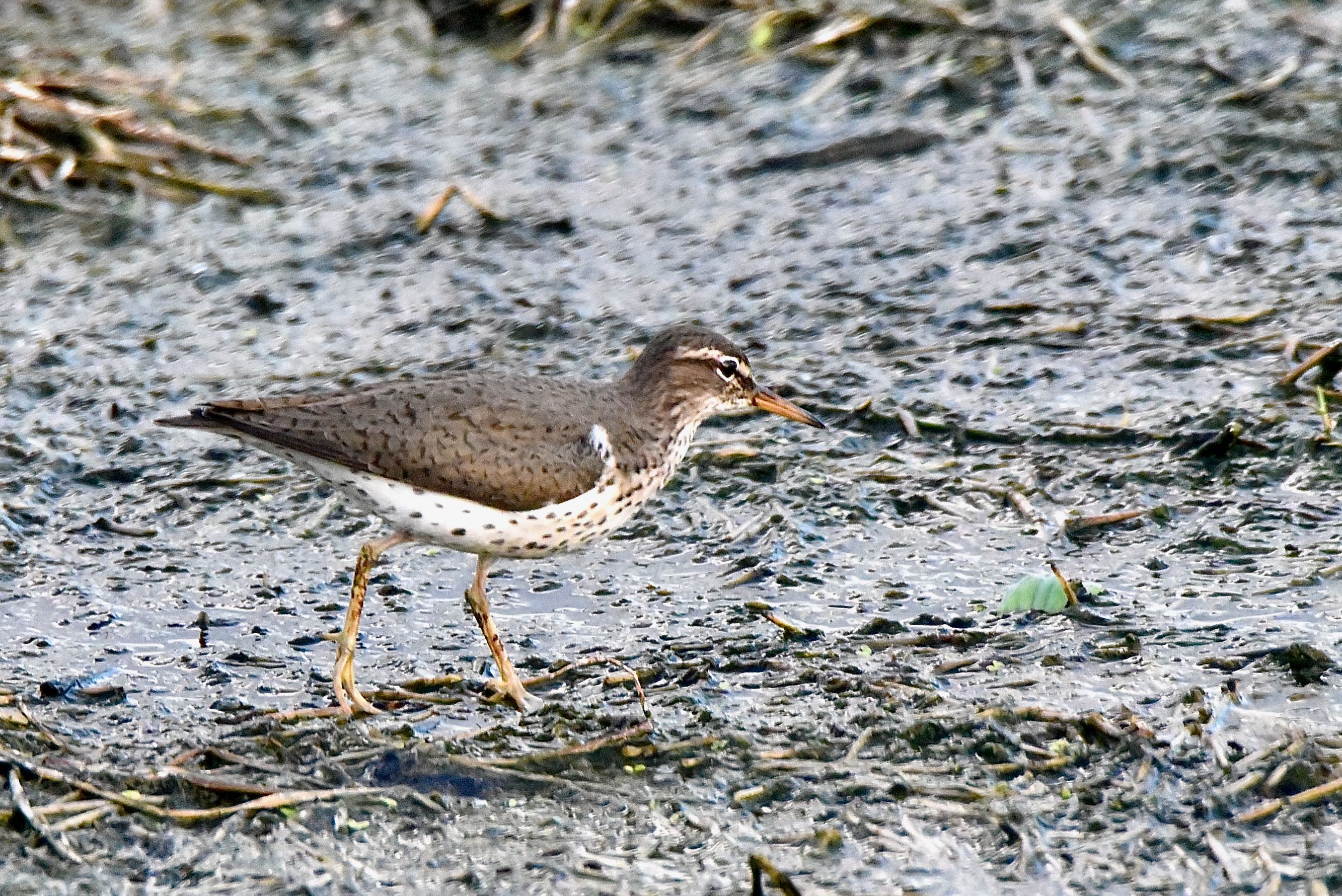
Spotted sandpiper, photographed at Green Cay Nature Center, Boynton Beach, Palm Beach County, in April 2019.
This is a sandpiper that's different in so many ways, from where it lives and breeds to the roles males and females play in raising their offspring. And unlike most sandpipers, it's easy to ID. If its distinctive plumage doesn't give it away, its odd behavior most assuredly will.
The spotted sandpiper, Actitis macularius, is a migratory visitor to Florida, coming here in the cooler months. It's a fairly common bird, found over almost all of North America at one time of the year or another. While most sandpipers nest only in the extreme northern reaches of the continent, spotted sandpipers will make their summer homes as far south as Virginia, New Mexico and Arizona. And unlike other sandpipers, it's the female, not the male, that's the aggressive one in the relationship.
It's medium sized as sandpipers go, with a body length of seven or eight inches and a wingspan that can reach nearly 16 inches. Females are slightly larger than males. It's light brown above, white below, yellow legs, orange bill and a prominent dark line through the eye and white stripe above. In the warmer months, the chest is covered with black spots that give the bird its name and make it easy to distinguish it from other sandpipers. Solitary sandpipers are also spotted, but their spots are white and only on the back. There's one other clue that gives away this bird; it constantly bobs its tail up and down, giving the appearance of teetering as it walks along.
Spotted sandpipers spend summers in the northern half of the United States and most of Canada. They'll winter from southern Georgia southward through Mexico, the Caribbean, Central America into South America. They can be found inland, along the banks of streams, rivers, lakes, in the mudflats of wetlands as well as along coastal beaches.
What truly makes this bird different is how the roles of the sexes are almost completely reversed not only from most sandpipers, but from most birds. Spotted sandpiper females are aggressively territorial, not the males. During breeding season, the females can lay as many as four separate clutches of eggs conceived by four seperate males. Males are the primary caregivers, incubating the eggs — they require 20 to 24 days before hatching — then watching the offspring until they're ready to fledge about two-and-a-half to three weeks later. The offspring may or may not be his. Young spotteds are able to leave the nest shortly after hatching. Males form subterritories within the female's larger territory.
Spotted sandpipers are ground nesters, digging a depression in place that offers concealment — in thickets or briars or against a log — and lining it with grass, twigs and other material. Both males and females participate in the work. Nest-building is part of the courtship process — a pair might start and abandon several nests before finishing the final site. Like sandpipers generally, spotteds forage by probing the ground with their bill but they'll also pick bugs off leaves and snap at flying prey. Their menu includes midges, flies, mayflies, worms, grasshoppers, crabs, shrimp and small fish.
Spotted sandpipers are members of Scolopacidae, the sandpiper family.
Green Cay Nature Center



